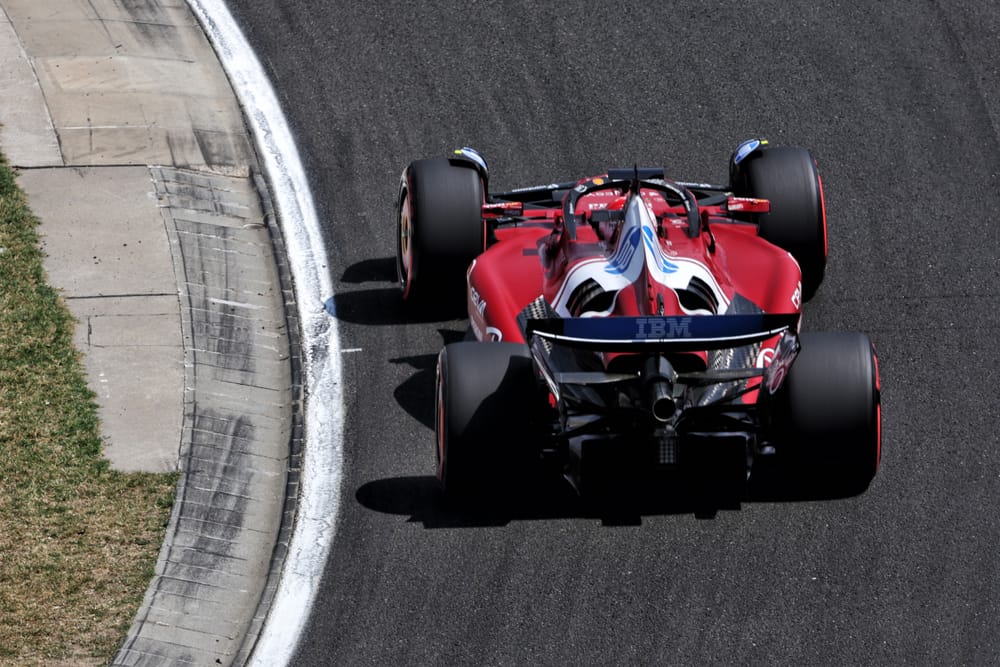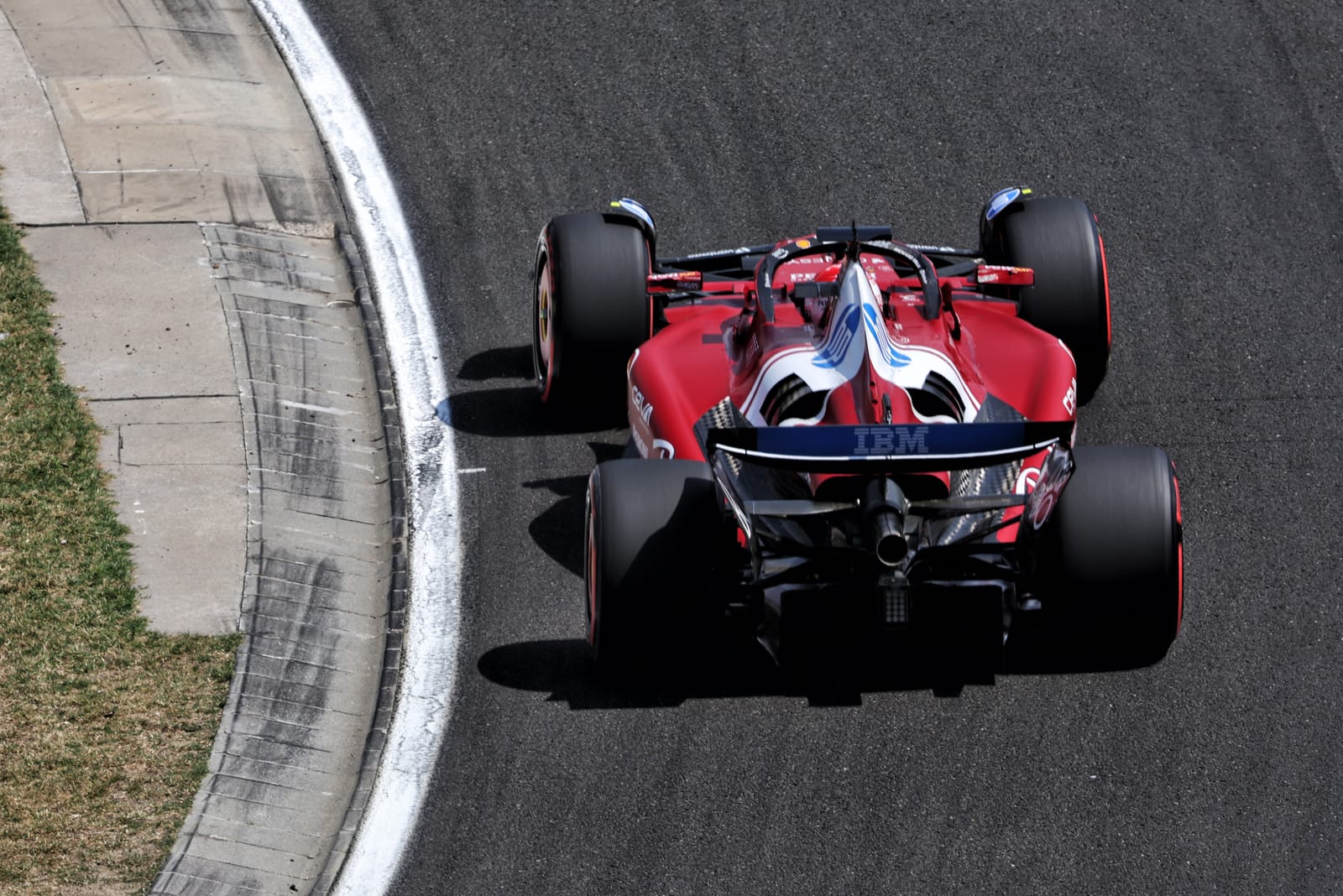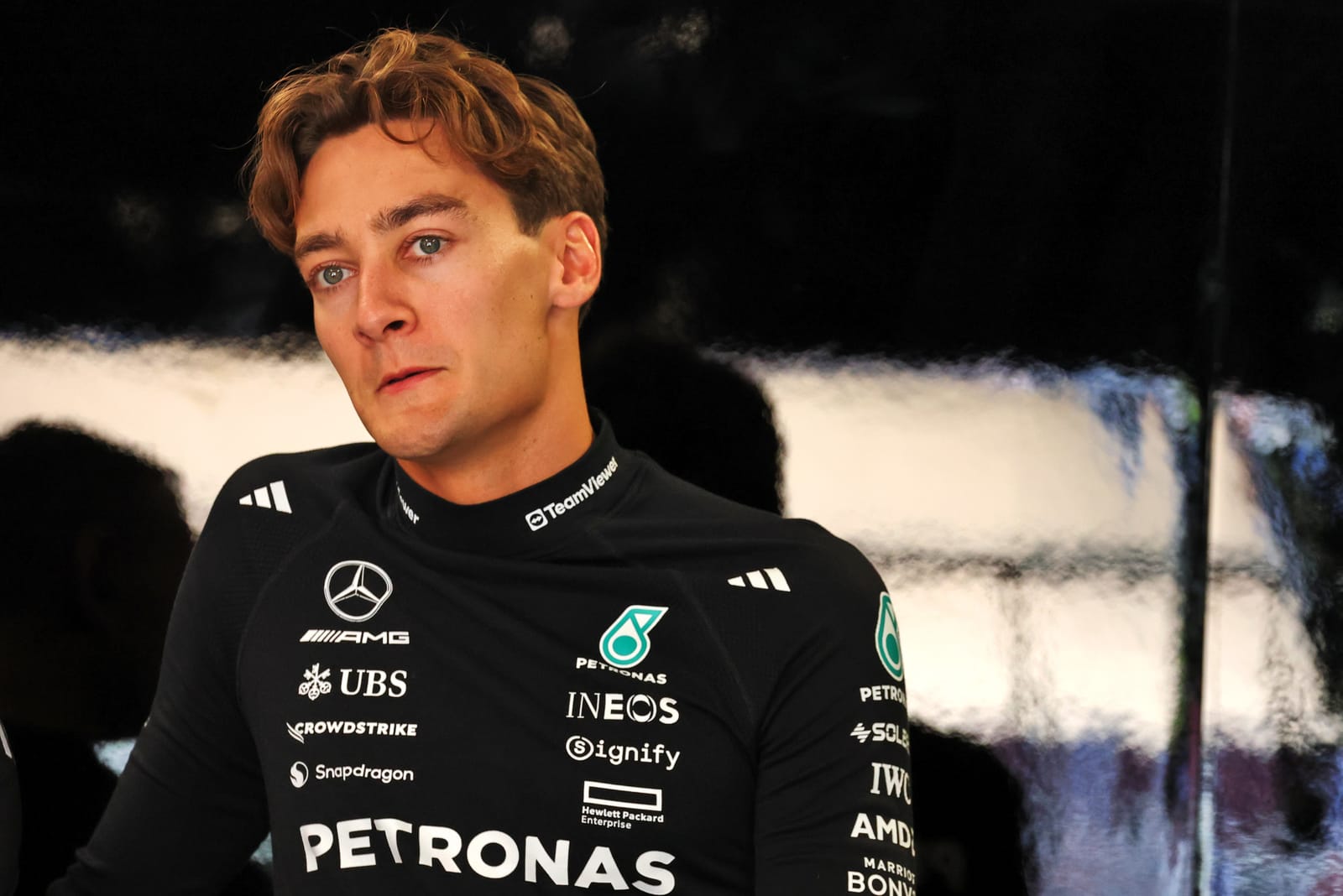OK, so the wind increased and changed direction between Q2 and Q3. That explains some of why Charles Leclerc snatched Hungarian Grand Prix pole from under McLaren's nose after Oscar Piastri and Lando Norris between them had dominated every session of the weekend in their McLarens. But not all. Other things were happening here.
Wind change
Let's look at the significance of the wind change first and how circumstances boosted its power to disrupt the order.
It went from a relatively gentle 1-1.4-km/h in Q2, with a headwind into Turn 2 (the 'fast' direction for laptimes) to more like 2-2.5km/h in Q3, with occasional gusts up to 3.3km/h - and with an inconsistent direction change between 90-120 degrees, making it a tail/crosswind into Turn 2 and the Turn 6/7 chicane, a tailwind into Turn 12 and a crosswind through the two long final corners.
Those indeed will have felt like very different conditions inside the car and in the way it behaved into and through the turns. But why did it result in a net swing of a massive 0.536s between Piastri and Leclerc (and 0.601s between Norris and Leclerc)?
Leclerc was much more gung-ho in how he attacked his final lap than either of the two McLaren drivers, who seemed outright spooked by the change in their car from Q2. But he was able to be, as any in-car comparison of the behaviour of the McLarens and Ferrari in Q3 will show how much more stable the Ferrari was through Turns 1, 2, 6, 13 and 14 in particular.
Leclerc had liked how the car felt in FP3 on Saturday morning, but the team was concerned about the rear tyre degradation which is always the defining factor here in race performance. Get the car well balanced for qualifying and it will overheat the rears in the race. This, like Sakhir, is a track where the cars have to be set up with more understeer than ideal for a qualifying lap.
The balance of the Ferrari in FP3 was felt to be a little 'too good' over a single lap. "I don't want to go into too much detail," said Leclerc, "but I liked how it was in FP3 but for qualifying we went back more to what we had before."
With those crosswinds through Turns 1, 13 and 14, the tailwinds through Turns 2 and 6/7, and only a headwind through Turns 4 (which is flat anyway) and 5, an understeer balance would be exactly what you'd want to retain stability and confidence. The McLaren, with its inherently superior rear tyre temperature control (the very thing at the core of its performance superiority) was not balanced as far towards understeer, as the rears did not need as much protection as on lesser cars.
So that wind change had a far bigger deleterious effect on the McLaren than the Ferrari, moving it towards edgy instability on corner entry and through the mid-corner crosswinds.
Leclerc explained that he was suffering a lot of mid-corner understeer from the wind - but that was part of why he wasn't getting the entry edginess of the McLaren. Watch from in-car as Piastri and Norris wrestle with the oversteer through Turn 1, the chicane and midway through Turn 12 - and contrast it with how smooth and progressive the Ferrari looks as Leclerc just leans on that outside front tyre and applies a little more lock.
Through the Turn 6/7 chicane alone, Leclerc takes almost 0.1s out of the McLarens. In the previous session, his Ferrari was losing more than that to them there. The fast, responsive front end which makes a car quick in stable conditions is exactly what you don't want as the wind is gusting in unfavourable mid-corner places.
"I did a 1m14.9s in Q2 and felt it was a nice easy lap," related Norris, "and I felt that I had a couple of tenths to come. But then I go out in Q3 and it feels dreadful and I'm struggling to do a 1m15.4s."
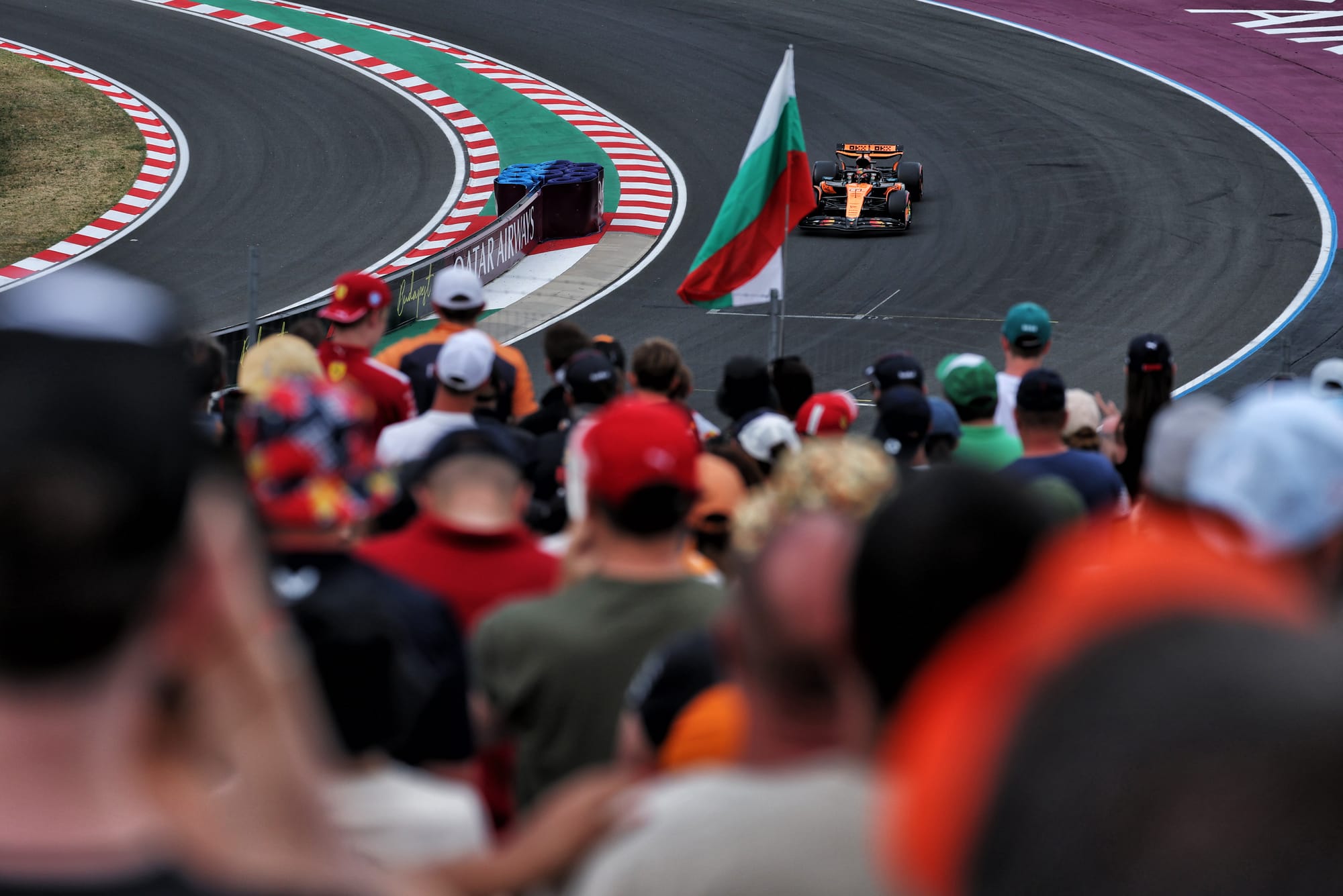
Piastri made much the same comment. Spooked by that, they were somewhat cautious on their final runs.
"Our drivers may have been a bit more cautious [than Leclerc]," observed team boss Andrea Stella.
It's a point with which Norris - fighting his team-mate for the championship - doesn't disagree.
"The situation me and Oscar are in, it's a bit harder for us to take risks on the final lap," he admitted. "We probably could've gone a tenth quicker but we also could've gone a tenth slower and that can put your three or four positions back."
In other words, the upside of pushing hard was (wrongly) assumed to be only a position on the front row, the downside was potentially a punishment of one or two rows. These things inevitably figure in a driver's disposition in the moment as the car proves suddenly wayward. These are the sort of high-pressure split seconds which can be decisive over a campaign. That campaign takes priority over the in-the-moment.
As the McLarens lost half a second, Leclerc found 0.1s - and that was enough to swing it in Leclerc's favour by 0.026s over Piastri.
The McLaren guys believe that Leclerc having done his first Q3 run on used tyres (because he'd used his other three sets of softs just in getting through, whereas the McLaren drivers had needed only two sets apiece) actually probably worked in his favour. Because the car would have felt better on the final run than the first Q3 lap. Whereas theirs felt just as bad.
Maybe there's something in that. But Leclerc was adamant that the Ferrari was much worse than in Q2. "No, the car definitely did not come alive," he insisted. "The wind made it worse."
So how did he actually gain time? Was his Q2 1m15.455s as easy and relaxed as the McLaren drivers' 1m14.9s? Maybe, but there's another reason - revealed quite clearly in GPS. Which brings us to:
Ferrari's Q3 engine improvement
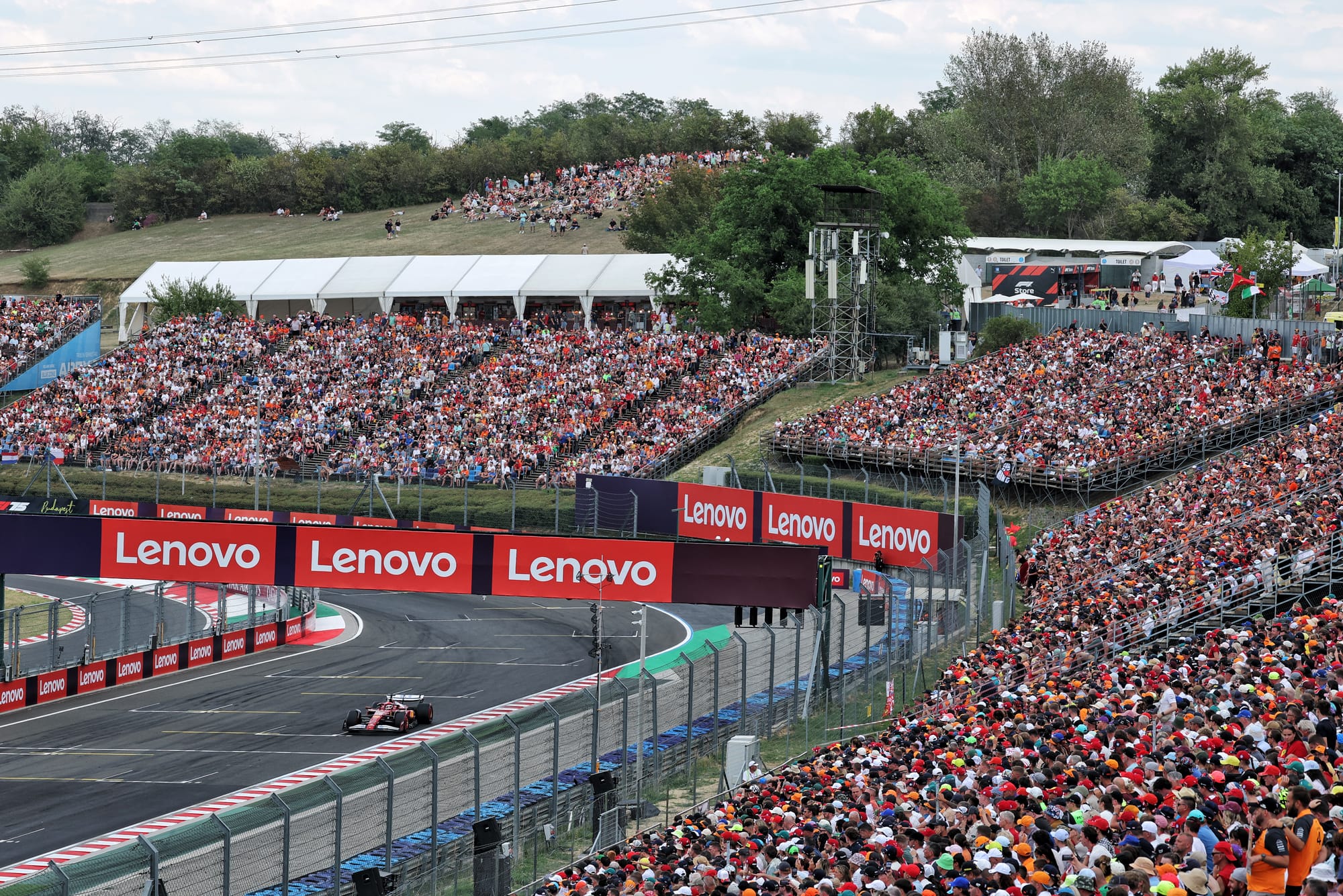
Recall how we told you at Silverstone and again the following weekend that Ferrari had a problem with the power unit not finding the power gains it was supposed to when fully extended in Q3? Possibly as the result of excessive internal temperatures?
Well, whatever that problem was, it was not suffering from it at the Hungaroring. Maybe that's just because the track does not feature long periods of full throttle running, or maybe it's found the solution to the problem.
Whatever the cause, the Ferrari motor was outgunning the McLaren's Mercedes as it deployed down the straights. The Ferrari was running a little less wing so was naturally faster, but the step change in speed comes as the deployment kicks in.
Ferrari remains coy about this issue, but there was nothing wrong with the way its horses were kicking in Q3 at the Hungaroring, in contrast to most races this season.
Temperature drop
McLaren's control of its rear tyre temperatures has been a major part of its advantage all season and the Hungaroring definitely places among the most extreme demands of that seen all season.
Look at any GPS laptime comparison between the McLaren and any rival car before Q3, and the rival loses almost all of its time from Turn 8 onwards as the McLaren keeps its tyres much closer to the ideal temperature.
"Our simulation shows that almost all of our loss of performance - around 0.4s of the 0.5s - between Q2 and Q3 came from the wind change," maintains Stella. "Not from the temperature drop."
Sure, but the Ferrari was done a big favour by the temperature drop - 41°C track temperature at the start of Q2, 37°C by the final Q3 runs - thereby offsetting one of its key disadvantages.
Pitlane choreography
Leclerc made himself very plain when he requested he be sent out early, as he just wanted a clear track, so as to prepare his tyres in the optimum way.
Ferrari acceded to his wishes. The McLarens by contrast were caught in the late queue in the pitlane.
Again, it probably didn't explain much of McLaren's deficit between Q2 and Q3, but it certainly allowed Leclerc a perfect preparation.
Then there was one final bit of the jigsaw: Leclerc's brilliance in feeling the car and sitting it on the edge. "It was a clean lap, basically," he said, as if producing that in such volatile conditions were a simple thing. It isn't.


